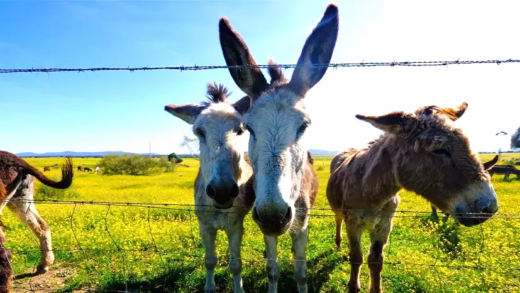Wetlands are vital ecosystems that provide essential functions such as water absorption, biodiversity support, and climate regulation. Human activities, including urban development and pollution, threaten these areas, necessitating effective conservation strategies. Protecting wetlands is crucial for maintaining biodiversity and ecological health.
Types of Wetlands
Wetlands are vital ecosystems that come in various forms, each with unique characteristics and functions. The main types of wetlands include:
- Swamps: These are wetlands dominated by trees and shrubs. They often occur in floodplains and are important for biodiversity.
- Marshes: Marshes are herbaceous wetlands, filled with grasses, reeds, and sedges. They are crucial for water filtration and providing habitat for wildlife.
- Bogs: Bogs are waterlogged areas rich in peat and acidic waters. They support unique plant species like sphagnum moss and are important for carbon storage.
Each type plays a crucial role in maintaining ecological balance. Understanding these differences helps highlight their importance in biodiversity and environmental health.
Wetlands and Water Absorption
Wetlands are natural sponges, effectively absorbing and storing excess water during heavy rains or floods. This water absorption capability helps in:
- Flood Management: Wetlands slow down water flow, reducing the risk of flooding in surrounding areas.
- Water Quality Improvement: By absorbing pollutants, wetlands help maintain cleaner water in nearby rivers and lakes.
In essence, wetlands act as a buffer against flooding, protecting both natural and human-made environments. Their ability to manage water is crucial, especially in regions prone to extreme weather events.
Wetlands Biodiversity
Wetlands are home to an impressive variety of plant and animal species, making them hotspots of biodiversity. Some key aspects include:
- Flora: Wetlands support unique plant life, including water lilies, cattails, and various aquatic grasses. These plants provide food and habitat for many animals.
- Fauna: Numerous animal species thrive in wetlands, including amphibians, birds, fish, and insects. For example, migratory birds often rely on wetlands for feeding and nesting.
The rich biodiversity of wetlands not only supports wildlife but also contributes to ecosystem services like pollination and pest control. Protecting these areas is vital for maintaining biodiversity and ecological health.
Wetlands Water Filtration
Wetlands play a crucial role in water filtration, acting as nature’s own water treatment systems. They filter pollutants from water before it flows into rivers and lakes. This is achieved through several mechanisms:
- Plant Absorption: Plants in wetlands absorb nutrients and contaminants, effectively removing them from the water.
- Microbial Activity: Beneficial microbes in wetland soils break down harmful substances, further purifying the water.
- Physical Filtration: Sediment and debris are trapped in wetland vegetation, preventing them from entering larger bodies of water.
This natural filtration process is essential for maintaining water quality, supporting aquatic life, and ensuring that ecosystems remain healthy. Without wetlands, many rivers would suffer from increased pollution levels, negatively impacting the flora and fauna that depend on clean water.
Soil Erosion Prevention
Wetlands are vital in preventing soil erosion, acting as buffers against strong winds and water flow. Their ability to stabilize soil is due to several factors:
- Root Systems: The extensive root systems of wetland plants anchor the soil, reducing the risk of erosion.
- Water Retention: Wetlands retain water, which helps to keep the soil moist and less prone to being washed away.
- Vegetation Coverage: Dense plant life protects the soil surface from the direct impact of raindrops, minimizing erosion.
By preventing soil loss, wetlands help maintain land integrity and support agricultural productivity. The protection of wetlands is crucial for sustaining soil health, which is foundational for food security and ecosystem stability.
Wetlands and Climate Regulation
Wetlands significantly contribute to climate regulation, playing a vital role in carbon storage and climate moderation. Here’s how they impact the climate:
- Carbon Sequestration: Wetlands store carbon in their plant biomass and soils, helping to mitigate greenhouse gas emissions.
- Microclimate Creation: They help regulate local temperatures and humidity levels, creating a more stable environment for various species.
- Flood Mitigation: By absorbing excess water, wetlands reduce the risk of flooding, which can be exacerbated by climate change.
Understanding the role of wetlands in climate regulation is essential for addressing climate change impacts. Protecting these ecosystems is not just about preserving nature; it’s also about safeguarding our future against climate-related challenges.
Human Impact on Wetlands
Wetlands are incredibly sensitive ecosystems that are directly affected by human activities. The impact of these actions can be severe, leading to degradation and loss of these vital areas. Key human influences include:
- Urban Development: Construction and land reclamation often lead to the draining of wetlands, disrupting local ecosystems.
- Agricultural Practices: Pesticides and fertilizers from farms can runoff into wetlands, introducing harmful chemicals that affect plant and animal life.
- Pollution: Industrial waste and sewage discharge into nearby water bodies can severely degrade wetland health.
The consequences of these actions are alarming. Loss of biodiversity, decreased water quality, and increased flooding risks are just a few of the outcomes. Protecting wetlands requires awareness of these impacts and a commitment to responsible practices.
Conservation Methods
To protect and restore wetlands, various conservation methods can be implemented. Here are some effective strategies:
- Restoration Projects: Rehabilitating drained or damaged wetlands can help restore their ecological functions.
- Protected Areas: Designating wetlands as protected areas limits harmful activities and supports biodiversity.
- Public Awareness Campaigns: Educating the public about the importance of wetlands can lead to better community involvement in conservation efforts.
These conservation methods not only help preserve wetlands but also enhance their ability to provide ecosystem services, such as water filtration and carbon sequestration.
Biodiversity Contributions
Wetlands are crucial for overall biodiversity, serving as habitats for countless species. Their ecological significance is highlighted by:
- Habitat for Wildlife: Wetlands support a diverse range of plants and animals, including endangered species.
- Breeding Grounds: Many fish and amphibian species rely on wetlands for breeding, ensuring population sustainability.
- Food Sources: Wetland plants and animals provide essential food sources for various wildlife, contributing to broader food webs.
Maintaining wetlands is vital for preserving biodiversity, as they play a pivotal role in supporting life on Earth. Their protection contributes to the health of our planet and the survival of many species.





Comments are closed.